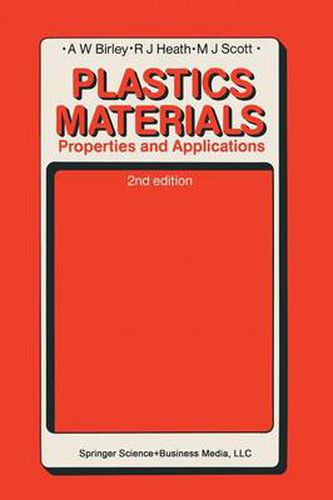Readings Newsletter
Become a Readings Member to make your shopping experience even easier.
Sign in or sign up for free!
You’re not far away from qualifying for FREE standard shipping within Australia
You’ve qualified for FREE standard shipping within Australia
The cart is loading…






This title is printed to order. This book may have been self-published. If so, we cannot guarantee the quality of the content. In the main most books will have gone through the editing process however some may not. We therefore suggest that you be aware of this before ordering this book. If in doubt check either the author or publisher’s details as we are unable to accept any returns unless they are faulty. Please contact us if you have any questions.
Plastics are part of everyday life and contribute immensely to the benefit of humanity. When failures occur, they are due in part either to inferior properties (resulting from poor design or badly controlled processing), or to an incomplete understanding of the properties and applications of plastics materials. Since publication of the first edition, the plastics industry has increas ingly adopted advanced business procedures and automation (such as closed loop control and robotics), to combat the effects of recession, and has moved increasingly towards methods based on sound scientific and technological principles. Plastics have increasingly been used in appli cations once dominated by the use of metals and ceramics. For instance, in the automotive industry, the modern car now contains a much higher proportion of polymers, including commodity plastics and more spec ialized materials. In addition, compact discs are being made from new injection-moulding grades of polycarbonate, which meet the requirements of a demanding process. This second edition has been thoroughly revised and extended to include new materials, technologies and design concepts. Chapters on thermoplastics reflect the development of polymer blends and alloys, whilst the chapters devoted to thermosets have been reorganized to accommodate the renaissance in the applications of phenolics and to cover the growing importance of polyurethanes. The related two component process technologies are now included; having undergone major developments in the last decade, they have become important shaping processes.
$9.00 standard shipping within Australia
FREE standard shipping within Australia for orders over $100.00
Express & International shipping calculated at checkout
This title is printed to order. This book may have been self-published. If so, we cannot guarantee the quality of the content. In the main most books will have gone through the editing process however some may not. We therefore suggest that you be aware of this before ordering this book. If in doubt check either the author or publisher’s details as we are unable to accept any returns unless they are faulty. Please contact us if you have any questions.
Plastics are part of everyday life and contribute immensely to the benefit of humanity. When failures occur, they are due in part either to inferior properties (resulting from poor design or badly controlled processing), or to an incomplete understanding of the properties and applications of plastics materials. Since publication of the first edition, the plastics industry has increas ingly adopted advanced business procedures and automation (such as closed loop control and robotics), to combat the effects of recession, and has moved increasingly towards methods based on sound scientific and technological principles. Plastics have increasingly been used in appli cations once dominated by the use of metals and ceramics. For instance, in the automotive industry, the modern car now contains a much higher proportion of polymers, including commodity plastics and more spec ialized materials. In addition, compact discs are being made from new injection-moulding grades of polycarbonate, which meet the requirements of a demanding process. This second edition has been thoroughly revised and extended to include new materials, technologies and design concepts. Chapters on thermoplastics reflect the development of polymer blends and alloys, whilst the chapters devoted to thermosets have been reorganized to accommodate the renaissance in the applications of phenolics and to cover the growing importance of polyurethanes. The related two component process technologies are now included; having undergone major developments in the last decade, they have become important shaping processes.